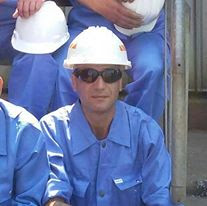Techniques in Thermal Analysis: Hyphenated Techniques, Thermal Analysis of the Surface, and Fast Rate Analysis STP 1466
Hyphenated Techniques, Thermal
Analysis of the Surface, and Fast
Rate Analysis
STP 1466
In May 2004 a two day symposium titled “Techniques in Thermal Analysis: Hyphenated Techniques,
Thermal Analysis of the Surface, and Fast Rate Analysis” was held at the ASTM Headquarters in
West Conshohocken, PA. Twenty-two presentations were given at the symposium. Additionally, the
presenters were given the opportunity to submit to the Journal of ASTM International and for their
papers to be included into a special technical publication (STP), thirteen papers were received.
The symposium itself was timely and reflected leading edge research in thermal analysis. Of major
interest now is fast scan calorimetry in both instrument development and techniques. Through the
use of a thin film nanocalorimeter scanning rates as high as 10,000 °C/sec can now be achieved. This,
for example, allows for the better study of semicrystalline polymers where the reorganization process
can be inhibited and the original metastable crystal can now be analyzed. Through the use of current
technology, fast heating rates were employed to study epoxy curing. Fast rate analysis allowed the
separation of the glass transition and cure exotherm.
The Hyphenated Techniques session brought some interesting papers mostly using thermogravimetric
analysis (TGA) with another technique. It should also be noted that other techniques that have hyphens
were also presented such as a paper on temperature-modulated differential scanning calorimetry,
which is more prevalently written modulated temperature differential scanning calorimetry
without the hyphen. An interesting study of the combined use of TGA with DTA (differential thermal
analysis) and Raman spectroscopy was presented. The spectroscopy was performed on the sample
itself as it underwent physical changes. This allowed the more precise study of dehydration of
pharmaceuticals. Also presented was a paper advocating improved modeling when using hyphenated
techniques such as TGA/FTIR (Fourier transform infrared) allowing kinetic parameters to be determined
using both sets of data. Also of note was a simple calibration method for the quantitative use
of mass spectrometry with TGA for a variety of encountered off gases.
Finally, a number of papers were given on thermal analysis of the surface. Many of these papers centered
on the use of a modified atomic force microscope (AFM), or Micro-Thermal Analysis, that uses
the AFM probe as a thermal device. A technique that shows promise is the use of micro-thermal analysis
in combination with other techniques such as FTIR. This technique is referred to as photo thermal
micro-spectroscopy (PTMS). PTMS uses the AFM probe to detect temperature fluctuations after
a sample has been exposed to IR radiation allowing the construction of an infrared spectrum. This
permits for a fast identification of an unknown material with minimal sample preparation.
The symposium chairs would like to acknowledge and extend our appreciation for all who have
helped with the organization of the symposium and subsequent publications. A special thanks goes
out to the reviewers who took the time and provided the needed commentary. Finally, we would like
to recognize the sponsorship of both ASTM International Committee E37 on Thermal Measurements
and the Thermal Analysis Forum of the Delaware Valley.
Labels: STANDARDS


























